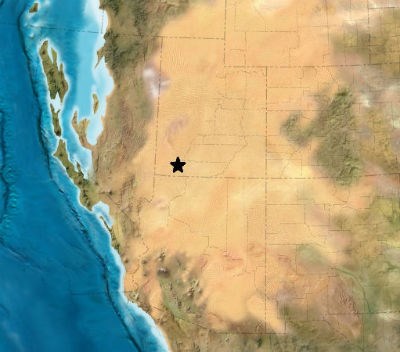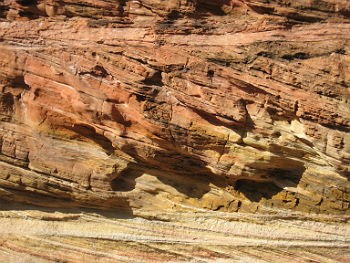
NPS photo/Adrienne Fitzgerald 
Paleogeographic map courtesy of Ron Blakey, Colorado Plateau Geosystems, Inc. ~185-180 million years ago
The Navajo Sandstone consists of thick layers of cross-bedded sandstone formed by windblown sand dunes in a vast ancient desert. In the early Jurassic, the climate of the Colorado Plateau dried significantly, creating desert conditions over a broad region. The Navajo Sandstone is the result of the largest known sand desert in the history of our planet, which covered the area of today's Colorado Plateau and beyond.

NPS photo/Adrienne Fitzgerald Diagonal patterns in the Navajo Sandstone are called cross-bedding. Cross-beds are found in modern active sand dunes, but the Navajo Sandstone preserves the history of ancient wind patterns and migrating sand dunes in this vast desert.
Cross-beds dip downward in the direction the winds were blowing, so in the adjacent photo, the ancient winds blew from left to right.

NPS photo
How big were the sand dunes? And how did they become sandstone?
Curious about the colors of the Navajo Sandstone?
Is there any evidence of life in the Navajo Sandstone?
Return to the main Rock Layers page
|
Last updated: June 13, 2015
